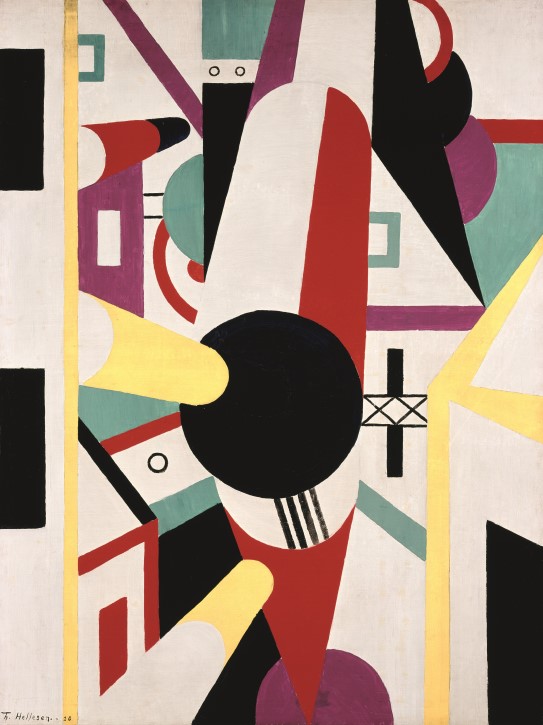Machine Cubism
Thorvald Hellesen
Transcription
Actor
Dynamite, dynamite, that’s what we want. Intensity and explosiveness of course also fit better with the times in which we live.
Narrator
This is a quote from Fernand Léger, describing how he and Hellesen began to move away from the calm colours and compositions of Picasso and Braque, towards Machine Cubism.
Lin Stafne-Pfisterer
In Paris, following the First World War, many artists embraced modernity and worked with artistic expressions that can be interpreted as attempts to give the modern world meaning.
Narrator
This is Lin Stafne-Pfisterer, art historian at The National Museum
Lin Stafne-Pfisterer
There was an enthusiasm for the mechanics in life - industrial assembly lines, cars and aeroplanes…
During this time, Hellesen’s paintings were stylistically similar with Léger’s art, but in some areas, Hellesen went further - the city is presented as a machine – a place filled with rotating drive shafts, revolving wheels, vibrating conveyer belts and buildings shooting up from the ground.
Narrator
The abstraction, intensity, and explosiveness from this new direction began to surface in a variety of mediums across the arts, such as the performing arts, fashion, and interior architecture….
Lin Stafne-Pfisterer
Hellesen was commissioned to decorate the Maritime Building in Kristiania (now Oslo) in the mid 1920s - Where he designed floor patterns with brightly-coloured tiles, decorative borders, signs for each floor and ceiling paintings.
Meanwhile, his sister Sylvia Salvesen, established the fashion salon Sylvian, the first in Norway to sell French couture and prêt-à-porter.
And, the pattern she used for the jacket displayed here is based on a design by Thorvald Hellesen, and hand-embroidered by their mother Ida Hellesen.
The pattern is constructed as repetitions of abstracted forms and figures - perhaps it is a vase, but it could also be a human…
The colours and the black contrasts resembles the dance paintings Hellesen made for the Maritime Building’s dance restaurant. And, it’s as if we can see and feel the tango in the large abstract dance images.
Narrator
Many of Hellesen’s designs for wallpaper, textiles and posters have been lost. But, the fragments that remain are enough to highlight the contours of a designer of international calibre.